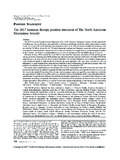Transcription of Reverse Alzheimer's With The Bredesen Protocol - ReCODE
1 Reverse Alzheimer's With The Bredesen Protocol - ReCODE . August 25, 2017 Jacob Gordon The Bredesen Protocol This Protocol has been tested in over 250 subjects to effectively Reverse cognitive decline in neurodegenerative diseases such as Alzheimer's Disease and Dementia. Contents: 1. Basics 2. Amyloid Plaques 3. 3 Types Of Alzheimer's Disease 4. Testing/Biomarkers 5. Genetics 1/36. 6. Treatment 7. Infections 8. Lifestyle 9. Diet (Ketoflex 12/3). 10. Supplements And Herbs 11. Mechanism Of Action Basics The Bredesen Protocol was developed by Dr.
2 Dale Bredesen and his team at MPI Cognition. This Protocol used to be called the MEND Protocol , but now is called The overall goal of this Protocol is to fix the following (which in turn reverses cognitive decline and helps with Alzheimer's and Dementia): Insulin resistance Inflammation/infections Hormone, nutrient, and trophic factor optimization Toxins (chemical, biological, and physical). Restoration and protection of lost (or dysfunctional) synapses Protocols like this may never reach global recognition or even FDA consideration for further evaluation.
3 The problems with most FDA-based studies is that they only look at one aspect of the disease - X causes Y. Unfortunately, AD is complex and there are many root causes to it. The ReCODE Protocol looks at 45 factors (metabolic markers) that have to be simultaneously optimized (more discussed below). Amyloid Plaques Amyloid Precursor Protein Amyloid precursor protein (APP) is naturally occurring in the brain and depending on how it is cut (either by netrin-1 or other molecules) it can either turn into: 1. Something healthy for the brain (such as sAPP and CTF).
4 OR. 2. Something toxic such as amyloid-beta (as well as Jcasp and C31). R. 2/36. If APP is cut to produce amyloid-beta, then amyloid-beta can continue to cut APP into more amyloid-beta plaques. This creates a positive feedback loop, thus creating more and more amyloid-beta plaques in the brain, instead of creating healthy molecules for the brain. This positive feedback loop creates a clastic (destructive) effect on the synapses, instead of a blastic (protective) response. Amyloid-Beta Plaque The dogma behind amyloid plaque (the sticky plaque that builds up in the brain of Alzheimer's patients) as the main evil in Alzheimer's Disease (AD) is actually incorrect.
5 3/36. In fact, it may be protective: R. Acts as an anti-microbial Binds to toxins (like heavy metals). Protects against inflammation If you have been shot, would you just patch up the wound and not remove the bullet? No, you would treat the underlying problems (remove the bullet) and replace the blood loss. The Bredesen Protocol first targets the underlying problem. 3 Types Of Alzheimer's Disease There are 3 types of Alzheimer's disease described in the ReCODE Protocol . You can develop one of these or a combination: 1.
6 Inflammation Anything that causes inflammation to the brain (low chronic inflammation can do this as well). can contribute to Alzheimer's Disease (AD): 4/36. AGEs ApoE4 (and ApoE3) R. Diet High in Lectins Imbalances in fatty acids (omegas). Infections Insulin Resistance Leaky Gut or Leaky Blood Brain Barrier Neuroinflammation Toxins (incl metals). Glycotoxic Glycotoxicity comes form an imbalance of glucose/insulin usage in the brain. The pancreas produces Insulin-Degrading Enzyme (IDE, the enzyme that breaks down insulin) to break down amyloid beta.
7 If IDE is used up by a diet too high in sugar (like someone with insulin resistance), then there is none left to break down amyloid beta. This type of AD is called because it is a combination of AD 1, inflammation and AD 2, trophic loss. For example, having high amounts of glucose in the blood creates inflammation, and having improper usage of insulin, degrades insulin's ability to act as a neurotrophic (brain growth). promoter. Intranasal insulin may help with this type. 2. Metabolic/Trophins Loss This type of AD is usually caused by imbalances in the endocrine system (hormones) and nutrient depletion, as well as neurotrophic loss (brain breaking down faster than it can regrow).
8 This includes: ApoE4 R. Hormone Imbalances (Vitamin D, Sex and Neuro Steroids, Thyroid). Insulin Resistance Methylation Problems Mitochondrial Damage Neurotrophic Loss (atrophy in brain). Nutrient Depletion 3. Toxins 5/36. The toxin/infectious type of AD is more environmental and can be caused by: ApoE3 (more common). Heavy Metals (including amalgams). Hormonal Imbalances HPA-Axis Imbalances Infections (such as mold, Lyme, HSV, active EBV, oral/nasal/gut dysbiosis) R. Low Zinc/high copper ratio R. Psychiatric disorders (correlation).
9 Toxins (including haptens, pesticides, NSAIDS, PPIs, statins, and other drugs) R. This usually occurs after 80 y/o. Testing/Biomarkers All the labs and tests for the Bredesen Protocol can be ordered here (does not include MRI/PET scan). Blood tests: Albumin/Globulin Ratio (A:G Ratio). > (albumin). Alpha-MSH. 35 81 pg/ml Arsenic <7 mcg/L. Cadmium < mcg/L. Calcium mg/dl Cholesterol 150. Complement C4a < 2830 ng/ml Copper 90-110 mcg/dL. Copper:Zinc Ratio (also look at ceruloplasmin 30). Cortisol (morning). 10-18 mcg/dL.
10 DHEA. 350-430 (women) mcg/dL. 400-500 (men) mcg/dL. Estradiol (Estrogen). 6/36. 50-250 pg/ml Folate 10-25 ng/ml Glucose (fasting). 70-90 mg/dL. Glutathione micromolar HbA1C. HDL. >50. HLA-DR/DQ. negative Hs-CRP. Il-6. 3pg/ml Insulin (fasting). microIU/ml LDL-p 700-1000. Lead <2 mcg/dL. Leptin ng/mL (male). ng/mL (female). Mercury <5 mcg/L. MMP9. 85-332 ng/mL. Omega 6:3 Ratio Osmoality 280-300 mosmol Oxidized LDL. <60 U/l Pregnenolone 50-100 ng/dL. Progesterone 1-20 ng/ml Potassium mEq/L. RBC Magnesium 7/36.

